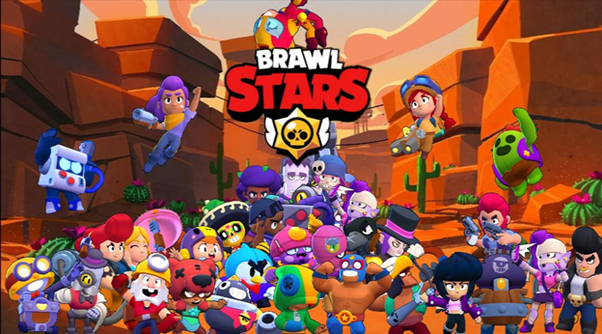Translating Affordances — From Digital to Physical
Rethinking and Redesigning Brawl Stars
This week, we worked on the theme of translating affordances. The very goal of our projects was to translate a digital interface into a tangible interface. Inspirations could be drawn from any app, digital game, website, or social media. Our job was to figure out how good the affordances of our selected digital interfaces would perform if they were transformed into physical components.
I chose Brawl Stars, a mobile video game developed by the Finnish video game company Supercell, as my translating affordances project. The reason I chose Brawl Stars was not only because I have been playing this game for over a year now, but also because I was truly curious about how the game would turn out if it could be played in real world.

When thinking and designing the physical interface of Brawl Stars, I came across questions such as how to express the brawlers’ (characters in Brawl Stars) movements in an honest and authentic way in the physical world and how to maintain the essence of the game that Brawl Stars has branded in its design? As Brawl Stars was generally recognized as a fun and relaxing game to play in leisure time, it also required players’ engagements and tactics. Therefore, to translate its digital interface into a physical one, I believed that players’ mobility and agility should be guaranteed.
In this project, I focused on the classic brawl ball map that was very similar to the layout of a soccer field.

The characters I placed in this map were Tick, Nita, and Mr.P (Blue team) and Poco, Spike, and Gale (Red team).

While I was sketching the map and imagining how the brawlers would move if they could be physically controlled, I wondered what kind of bodies I should create for the brawlers and how players would be able to move the brawlers around on the map.

I gained inspirations from various board games such as chess, back gammon, desktop game such as foosball game, and even Bunraku, the Japanese puppet theater.




The question was — which would be the most desirable and convenient form to render on a tangible map? Eventually, I chose to make the characters into forms like chess pieces and instead of making full 3D images of the characters, I only drew their heads and pasted them on hard cardboards. In that way, the brawlers could be controlled easily. I thought about moving the brawlers with magnets or with strings like people did in the puppet theatre, but those methods would likely cause traffic during the movements. Additionally, it would not make sense if I designed my map like the layout of a foosball game as well as controlled the movements of brawlers from the sides because the limited numbers of players on the play field would make it hard to attack and defend.
Building the Prototype:
Materials
· Thin Cardboard, Thick Cardboard, Cereal Box
· Green Acrylic Paint
· Cotton Pads for Coloring
· Elmer’s Glue
· Scissors, Ruler
· Color Pencils, Paper
· Straws
· 1 Ping Pong Ball


- Making the gates, blocks, and grass on the map with cardboard, cereal box, straws, paints, and glue.

2. Making Brawl Stars characters: Spike, Poco, Nita, Gale, Tick, and Mr. P.


3. Putting all the parts together on the tangible Brawl Ball map.

4. Shots of the physical interface from different angles.






5. Testing affordances.

